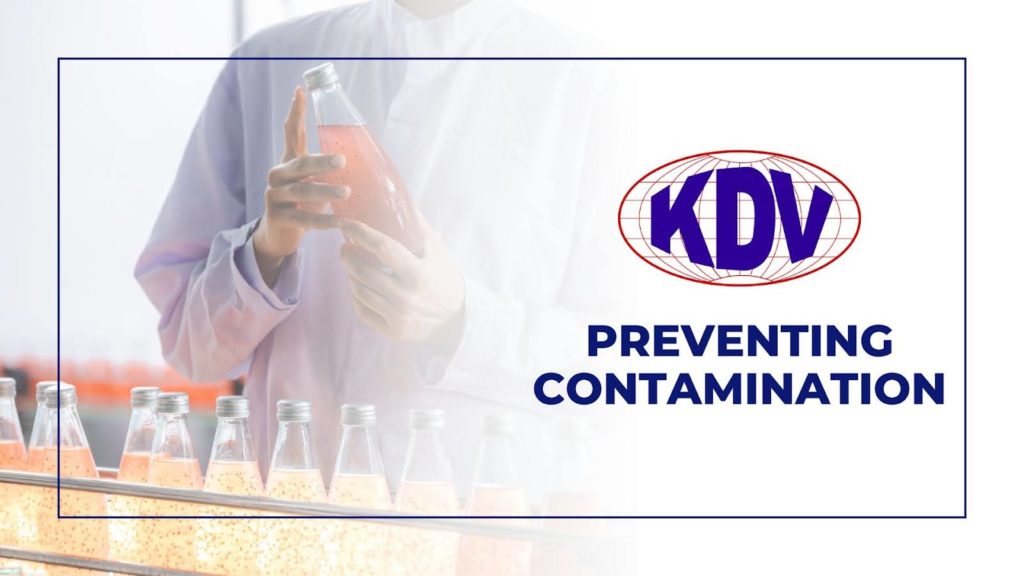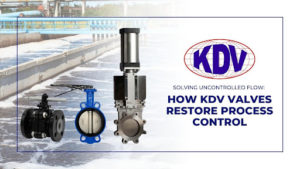Preventing Contamination with KDV Valves
Contamination and cross-contamination are constant threats in industries ranging from food and beverage production to sensitive pharmaceutical manufacturing. None of us want to be associated with contaminated food or medicines—these pose serious risks and potential disasters for human health. Compromised products can lead to costly recalls, jeopardise safety, and severely damage a company’s reputation. That’s why maintaining rigorous control over every aspect of the production process isn’t just important—it’s essential. KDV Valves are precision-engineered with advanced sealing technology and high-quality materials, ensuring your processes remain secure and that contamination risks are minimised for maximum product integrity.

The Nature and Consequences of Contamination
Contamination occurs when any undesirable substance or material enters a product or controlled environment. These contaminants can pose health hazards, degrade product quality, and cause compliance issues.
Understanding Different Types of Contamination:
- Biological Contamination: Microorganisms like bacteria, viruses, fungi, and their toxins can infiltrate products, posing significant risks to food safety and pharmaceutical sterility. These biological contaminants are direct threats to consumer health.
- Chemical Contamination: Unwanted chemicals such as pesticides, cleaning agents, heavy metals, or residues from manufacturing can affect product safety and functionality. Even trace amounts of these substances can cause significant health concerns and lead to hefty regulatory penalties.
- Physical Contamination: Foreign objects like glass, metal shards, plastic fragments, insects, or dirt can inadvertently enter products. These physical contaminants can damage machinery, present choking hazards, and adversely impact consumer trust, often resulting in costly product recalls.
- Cross-Contamination: This occurs when contaminants—whether biological, chemical, or physical—are transferred from one substance, surface, or product to another. Cross-contamination is especially dangerous when dealing with allergens, potent pharmaceuticals, or hazardous materials, as it can lead to widespread contamination and significant health risks.
Industries Where Contamination Control is Paramount
Food and Beverage Sector: Maintaining stringent hygiene standards is essential to prevent microbial contamination and foodborne illnesses. Additionally, food-grade manufacturing facilities must guard against chemical or physical adulteration.
Pharmaceutical Industry: Ensuring the sterility, purity, and potency of products is fundamental. Contamination can compromise the efficacy and stability of medicines, posing severe risks to patient safety.
Other Critical Sectors:
- Chemical Manufacturing: Preventing unintended cross-contamination or the introduction of impurities is vital.
- Water Treatment: Removing biological, chemical, and physical contaminants is essential to ensure safe drinking water.
- Semiconductor Production: Contamination-free environments in cleanrooms are crucial for maintaining the integrity of semiconductor manufacturing.
The Role of Valves in Contamination Prevention
Unfortunately, valves that are poorly engineered or not properly maintained can become sources of contamination themselves:
- Leaking Issues: Worn seals, damaged components, or loose connections can cause leaks, allowing fluids or external contaminants to enter your system.
- Cross-Contamination: Valves that don’t fully isolate flows can allow tiny amounts of one fluid to mix with another, leading to cross-contamination.
- Material Incompatibility: If a valve’s materials react with the fluids they’re supposed to control, the valve itself can become a contamination source.
Diaphragm Valves: A Reliable Solution for Contamination Prevention
Given the serious consequences that even minor contamination can cause, choosing the right valve is crucial. Diaphragm valves offer distinct advantages, making them an ideal solution for contamination control. These valves are particularly valued for their ability to achieve excellent fluid isolation, effectively preventing cross-contamination and ensuring the integrity of your processes, particularly in critical applications like pharmaceuticals, food and beverage, and biotechnology.
Why KDV Valves are the Optimal Choice for Contamination Control
KDV Valves are specifically engineered to address contamination risks while maintaining the highest purity standards across a range of applications.
- What are diaphragm valves used primarily for? Diaphragm valves are extensively used in industries where maintaining hygiene and preventing contamination are paramount, such as food, beverage, and pharmaceuticals.
- Superior Materials: KDV utilises high-quality materials like stainless steel, PTFE, and PEEK, known for their corrosion resistance and compatibility with a wide variety of chemicals and fluids.
- Custom Material Options: With options including stainless steel and other high-performance materials, KDV valves can be tailored to your specific application, ensuring that the materials won’t react adversely with the substances they contact.
- Precision Engineering: KDV’s valves feature leak-proof seals and precise closures, ensuring that no fluids escape the valve when it’s not in use, thus preserving the purity of your process and preventing contamination.
- Hygienic Design: KDV offers valves with smooth internal surfaces and minimal crevices, making them ideal for applications that require stringent hygiene standards. These features help reduce the risk of microbial growth and facilitate easy cleaning.
Selecting the Right KDV Valve for Your Application
To achieve the best contamination control with KDV valves, careful selection is essential:
- Material Compatibility: Consult compatibility charts or collaborate directly with KDV to ensure the valve’s materials are suitable for the specific substances in your process.
- Appropriate Valve Type: Choose the most suitable valve type for your needs. While diaphragm valves excel in contamination prevention, other types like ball valves and butterfly valves may offer different benefits.
- Pressure and Temperature Ratings: Ensure the valve can handle your regular operating conditions and any potential surges.
- Size and Connection Considerations: The valve must integrate seamlessly into your existing piping system.
Securing Your Process with KDV Valves
Preventing contamination is essential for protecting product quality, ensuring safety, and maintaining your brand’s reputation. KDV Valves, with their focus on precision engineering and premium materials, provide a reliable solution for keeping your processes contamination-free. Explore their range of valves to find the ideal solution tailored to your industry and application.


